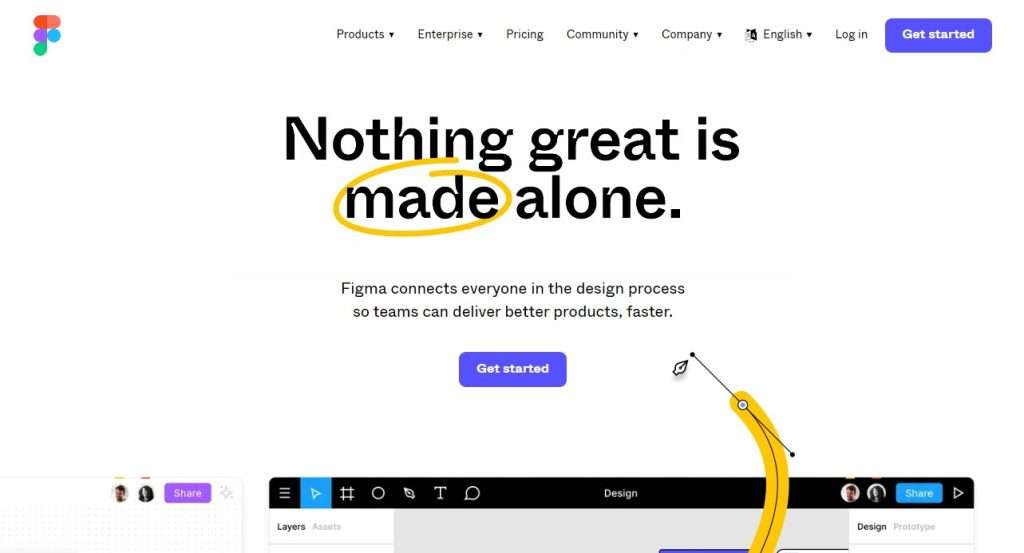In the world of software and technology, there’s never a shortage of new tools and products that aim to revolutionize how we work. And when it comes to design, Figma has made quite a name for itself. In 2021, Adobe even placed a $2 billion bid on the company — but why? What is Figma and why did Adobe want to acquire it? In this blog post, we’ll take a look at what makes Figma such a valuable asset and answer these questions.
What is Figma?

Figma is a cloud-based design tool that enables designers to collaborate on digital product designs in real time. It is similar to other design tools such as Sketch and Adobe XD, but with the added benefits of being cloud-based and having advanced collaboration features.
Figma was founded in 2012 by Dylan Field and Evan Boehm. The company is headquartered in San Francisco, California.
In 2019, Adobe announced that it had agreed to acquire Figma for $950 million.
What are the features of Figma?
Figma is a vector-based design tool that allows users to collaborate on the same file in real time. It also has a web app, so it can be used anywhere. Figma has an infinite canvas and is resolution-independent, so it can be used for everything from low-fidelity wireframes to high-resolution mockups. In addition, Figma has a built-in version control system so that users can easily track changes and revert to previous versions if necessary.
Other features of Figma include:
Collaborative design tools, including comments, notes, and version control
– Responsive layout with auto-layout capabilities
– Direct integration with other tools like Sketch, Photoshop, Illustrator, and After Effects
– Interactive prototyping for web and mobile apps
– Ability to share designs with others for feedback and collaboration
– Support for vector shapes and symbols
– Powerful asset management system
Why did Adobe bid $20B to buy Figma?

Adobe’s acquisition of Figma is a strong signal that the company is serious about its transition to a subscription-based business model. With Figma, Adobe gets a cloud-based platform that will complement its existing Creative Cloud offerings.
Figma is a young company, founded in 2012, that offers a collaborative interface for designers to create digital products. The service has been growing steadily, and now has over 1 million active users. That’s a drop in the bucket compared to Adobe’s Creative Cloud user base of 10 million, but it’s still an impressive number.
There are several reasons why Adobe would want to acquire Figma. First, as mentioned above, it complements Adobe’s existing Creative Cloud offerings. Second, Figma has a strong focus on collaboration, which is something that Adobe has been increasingly emphasizing in its own products. Third, Figma is gaining traction with developers, who are an important constituency for Adobe. And finally, Adobe no doubt sees Figma as a strategic acquisition that will help it fend off competition from Microsoft and other rivals.
Why Adobe Wants Figma
Adobe is no stranger to designing software. In fact, the company has a suite of tools that are industry standards for creatives. However, Adobe has been lagging behind in the user experience (UX) design space. That’s where Figma comes in.
Figma is a cloud-based UX design platform that enables real-time collaboration between designers. It’s simple to use and offers a wide range of features, making it a powerful tool for designing digital products.
Adobe recognizes the potential of Figma and its ability to help designers create amazing user experiences. That’s why the company has made a $2 billion bid to acquire Figma.
Adobe wants to not only add Figma’s features to its own suite of tools but to also leverage Figma’s collaboration platform to help creatives work more efficiently. This would allow Adobe to extend its reach and offer a more comprehensive design solution for its customers.
Ultimately, Adobe wants Figma to become an integral part of its portfolio, giving it a competitive edge in the UX design space.
How will this impact the design industry?

The design industry has been greatly impacted by the Figma acquisition. For one, it opens up opportunities for more collaboration between designers and developers. It also gives Adobe a leg up in the UX/UI design space. And lastly, it could signal a move towards more subscription-based software offerings.
Figma’s platform enables designers to quickly create and share designs with developers, eliminating the need for multiple iterations and providing a seamless collaboration experience. This feature is especially attractive to larger companies that have multiple teams working together on projects. Additionally, Adobe will now be able to offer more comprehensive UX/UI design solutions that can streamline the process of creating digital experiences across different platforms.
With Figma’s subscription-based pricing model, Adobe may start to move towards a similar model as well. This could mean an increase in subscription-based software offerings from Adobe, providing users with more flexibility and scalability when it comes to their design needs.
Overall, the Figma acquisition is likely to have a significant impact on the design industry, opening up new possibilities for collaboration and paving the way for more subscription-based software offerings.
Conclusion
Figma is changing the way designers and teams work together, bringing design, collaboration, prototyping and development all into one place. With its intuitive interface and powerful features that make it easier for teams to collaborate than ever before, Figma has become a go-to solution for many companies. Adobe’s $20 billion bid to purchase Figma is an exciting development in the tech world that shows just how much potential this platform carries. We can’t wait to see what the future brings!






